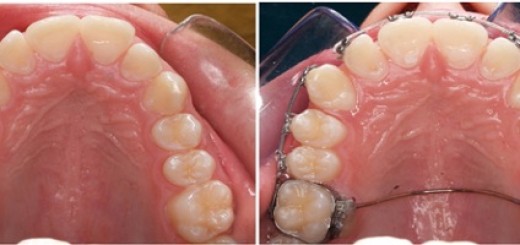How do you know if you have fleas?
Do you suspect that you or your furry companion might have fleas? It’s essential to be able to identify the signs of a flea infestation so that you can take prompt action to eliminate these pesky pests. In this article, we will explore the various indicators that can help you determine if you have fleas in your home or on your pets. By recognizing the signs early on, you can prevent the infestation from worsening and ensure a flea-free environment for you and your loved ones.
Unexplained Itching and Scratching
One of the most common signs of fleas is excessive itching and scratching. If you or your pet is constantly scratching, especially around the ankles, waist, or armpits, it could be an indication of fleas. Flea bites can cause severe itchiness due to the saliva they inject into the skin.
Presence of Tiny Black Specks
Fleas leave behind feces known as “flea dirt,” which looks like tiny black specks. You can often find these specks on your pet’s fur or on areas where they rest, such as bedding or carpets. To check if it’s flea dirt, place the specks on a white paper towel and add a few drops of water. If the specks turn reddish-brown, it confirms the presence of flea dirt.
Visible Fleas or Flea Eggs
If you closely examine your pet’s fur, you may be able to spot live fleas or their eggs. Adult fleas are small, agile insects that are reddish-brown in color. They are about the size of a pinhead and can quickly move through the fur. Flea eggs, on the other hand, are tiny white ovals that are about 0.5mm in length and are usually found close to the skin. Discover what do fleas look like.
Allergic Reactions
Some individuals and pets are hypersensitive to flea bites and may exhibit allergic reactions. If you or your pet experiences red, inflamed skin, rashes, or small bumps that are extremely itchy, it could be an allergic response to flea bites. These symptoms may require medical attention, so consult with a healthcare professional or a veterinarian for proper diagnosis and treatment.
Hair Loss or Hot Spots
Frequent scratching and biting due to fleas can lead to hair loss in pets. If you notice patches of thinning fur or areas where your pet has been excessively licking or scratching, it may indicate a flea problem. In severe cases, the constant irritation can cause hot spots, which are painful, inflamed areas on the skin.
Restlessness and Irritability
Fleas can make your pets extremely uncomfortable, leading to restlessness and irritability. If your pet is constantly moving around, shaking its head, or exhibiting signs of discomfort, it could be a result of flea infestation. Keep an eye out for any behavioral changes in your furry friend.
Flea Dirt on Human Clothing
If you have fleas in your home, there’s a chance that you may find flea dirt on your own clothing. Fleas can hitch a ride on your garments and leave behind their feces. So, if you notice tiny black specks on your clothes, particularly after spending time in areas where fleas are prevalent, it’s a strong indication that you have fleas.
Seeing Fleas in Your Home
In severe infestations, you may actually see fleas hopping around your home. They are excellent jumpers and can move quickly between surfaces. If you spot small, fast-moving insects that resemble fleas, it’s a clear sign that you need to take immediate action to eliminate them.
Increased Flea Activity During Warm Months
Fleas are more active during warm months, as they thrive in humid and moderate climates. If you notice an increase in flea activity in your home or on your pets during spring and summer, it’s crucial to implement preventative measures to avoid a full-blown infestation.
Reddish-Brown Stains on Bedding
Fleas feed on blood, and when they are crushed or their excrement is digested, it can leave behind reddish-brown stains on bedding or furniture. If you find these stains on your pet’s bedding or your own, it’s a strong indication that fleas are present.
Identifying the signs of a flea infestation is crucial for prompt intervention. If you suspect that you have fleas in your home or on your pets, look out for indicators such as unexplained itching, presence of black specks (flea dirt), visible fleas or eggs, allergic reactions, hair loss or hot spots, restlessness, flea dirt on clothing, seeing fleas in your home, increased flea activity during warm months, and reddish-brown stains on bedding. By taking proactive steps to eliminate fleas, you can ensure a comfortable and healthy environment for both you and your beloved pets.
FAQs
Q1: Can fleas infest my home if I don’t have pets?
Yes, fleas can infest your home even if you don’t have pets. They can be brought in from outside through rodents, wildlife, or even on your clothing.
Q2: How long does it take to get rid of a flea infestation?
The time it takes to eliminate a flea infestation depends on the severity of the problem. It can take anywhere from a few weeks to several months, as you need to treat both your pets and the environment.
Q3: Can fleas transmit diseases to humans?
Yes, fleas can transmit diseases such as bubonic plague, typhus, and cat scratch disease. However, the risk of transmission to humans is relatively low.
Q4: Are there natural remedies to get rid of fleas?
Yes, there are natural remedies such as diatomaceous earth, essential oils, and herbal sprays that can help repel and eliminate fleas. However, it’s important to research and use them safely, as some can be harmful to pets or humans in high concentrations.
Q5: How can I prevent fleas in the first place?
To prevent fleas, regularly vacuum your home, wash your pet’s bedding, and use flea prevention products recommended by your veterinarian. Avoid areas with known flea infestations and keep your pets away from stray animals.














